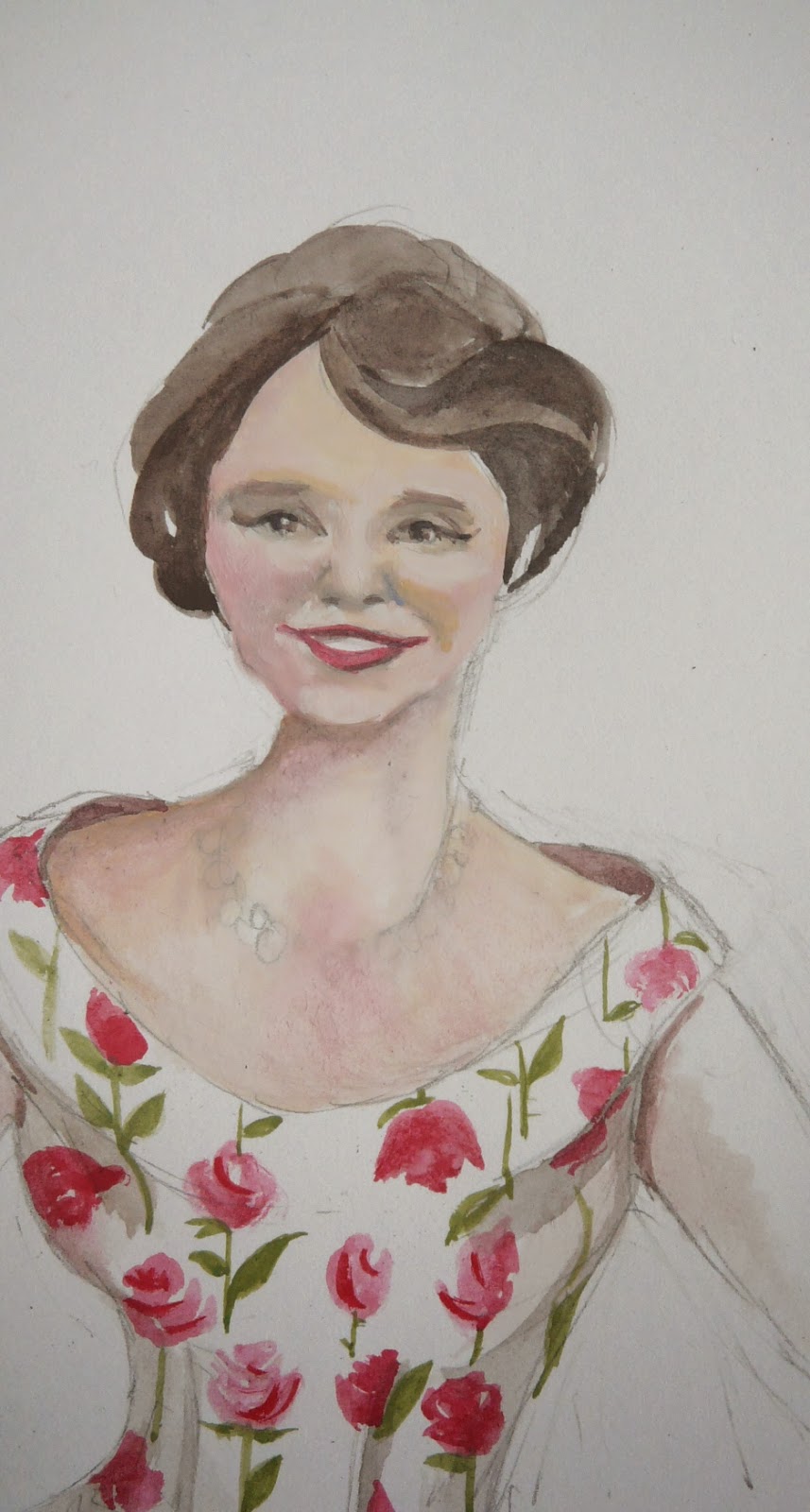 As my facebook contacts know I went for a little detour into the 1950s. I have the sad and tattered remains of a vintage pattern for a ball gown and have always loved the illustration on the cover. The saucy eyes and pose are not the best reasons for making a dress, but. I had a donated (thanks Althea) piece of rosebud cotton that was so period it crawled out of the cupboard and prostrated itself on the cutting table before I had the pattern pieces out of the packet. As usual I was making a scale version - this time measure in inches, switch to cm and divide by 4, and at a ballerina length it just fitted onto the cloth.
As my facebook contacts know I went for a little detour into the 1950s. I have the sad and tattered remains of a vintage pattern for a ball gown and have always loved the illustration on the cover. The saucy eyes and pose are not the best reasons for making a dress, but. I had a donated (thanks Althea) piece of rosebud cotton that was so period it crawled out of the cupboard and prostrated itself on the cutting table before I had the pattern pieces out of the packet. As usual I was making a scale version - this time measure in inches, switch to cm and divide by 4, and at a ballerina length it just fitted onto the cloth.

 |
| compare J Arnold's 18thC to scale piece of the 50s |
There should have been bells sounding from the word go. With the clear guide to the pattern shapes and then laying the pieces out on the floor it should have been apparent that this was a close cousin in construction to some of the 18thC robes I've been making. Not my brightest moment - I hold having to crawl around under the table to get enough floorspace as my excuse. (don't know why it is sideways in the photo- it wasn't that bad!) Construction was fairly straightforward - central pieces with inserted panels over the hips to give the skirt fullness and pleated at the seam lines, back opening, no sleeves. The muff I took as optional and declined to make it.
On the whole it went together well, there is a complex join at the shoulder which was a pain at that this size - too many layers to join and too little room for seam allowances - the armholes are bound and the tops are not really meant to join directly, there is a fold on the bodice front that carries over the shoulder rather like the robings on a robe francaise, and they attach under that. This has ended up as a little solid lump on the point of the shoulder but at least it is holding the shape and the garment together.
 |
| 18thC v 50s |
Neat.
The theory was fine, the sewing not quite so good. I did tight mini French seams which are stiffer than the fabric so the skirt seams stick out with greater determination rather than aesthetic awareness. Sometimes doing things right is wrong, and doing things less than best is better. Hope that makes sense.
The over all effect is more tea dress than ball gown - cotton was always going to do that to it, but the style works well. I had to make up a little wadding figure with wide enough shoulders to model it on to get the full effect of the cut. The emphasis on the breadth of the shoulders compared to the torso and then balanced by the full skirt is very glamorous and for such a modest dress very flirtatious. I don't know if this comes across in the photos but I tried to capture something of it in the illustrations. Loved painting the rosebuds! Shame about the faces. Really need some real people to model these dresses for me - don't know any this scale!
Some things remain the same no matter what era- Where are my diddy scissors?, I know I left my favourite needle stuck in the arm of that chair, where is it now?, and why after taking things out of a cupboard do they never fit back in?







No comments:
Post a Comment